Casio Mini
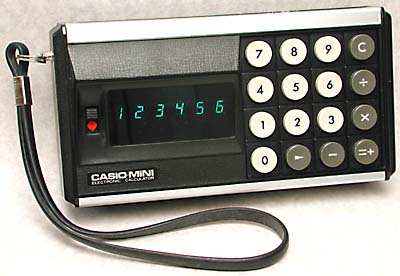
The Casio Mini showing its 6-digit display, lack of decimal point key, and its uncommon right-arrow key.
Casio Mini
Distinctive features: Low-cost hand-held calculator. Does not have a decimal point key.
Technical details:
Display is 6 digits, green fluorescent, individual tubes.
4-function, decimal point fixed at the far right of the display. Another 6 less significant digits are revealed by pressing the right-arrow key, as demonstrated below.
Integrated circuits - Hitachi HD32127P & NEC uPD129C, here date coded 1972.
6v (4x AA).
148 x 75 x 42 mm (6.1" x 3.1" x 1.3").
Introduced August 1972. Price in U.S.A. in November 1972 was US$59.95[1].
Casio Computer Co., Ltd., Made in Japan.
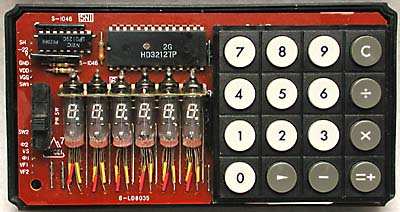
Inside the Casio Mini, revealing the six miniature fluorescent display tubes.
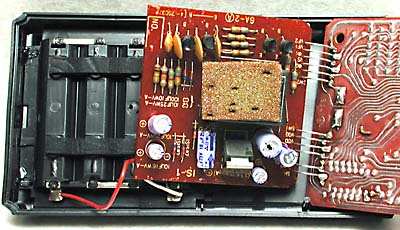
The power supply board, underneath the main circuit board, which produces the higher voltages for the fluorescent display tubes.
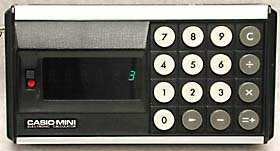
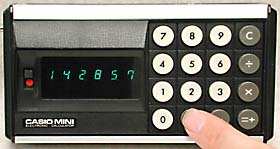
The Casio Mini has no floating point and lacks a decimal point key, so you cannot enter numbers with decimal points. However it can display the digits of a result to the right of the decimal point as shown above.
Here '22' has been divided by '7' to give an approximation to PI. The display shows '3', but by pressing the 'right-arrow' key the digits to the right of the decimal point can be seen, '142857', giving the complete answer '3.142857'.
When introduced in August 1972 the Casio Mini had a very low and competitive price. This was achieved by limiting the display to 6 digits, using vacuum-fluorescent-display (VFD) tubes (then cheaper than LED displays), and manufacturing in very large volumes. It was thought that most Japanese users would use the calculator for currency calculations and would be happy with a calculator that could calculate with whole numbers to ¥999,999.
The journal 'Electronics' had a report about this calculator[2]:
"... a new six-digit hand-held calculator announced by Casio Computer Co. The company
says that it plans to make 10,000 per month with about half to be sold in Japan and about half to be exported, primarily to the U.S. Six-digit calculators are not covered by recently imposed export
restrictions.
The calculator uses a single LSI chip, made by Hitachi Ltd., for all logic and six individual 8-millimeter-diameter fluorescent display tubes. It will operate for 10 hours on four AA
alkaline cells. While the calculator can add and subtract up to six digits—with double-length display for multiplication and division—no decimal point of any type is provided
. However, in division the ordinary six-digit display shows digits before the decimal point, while the shifted display shows digits after the decimal point."
The quality of this calculator is much better than that of the similarly priced Rapidman 800.
The Mini was updated several times over the next few years (with added model number on the back) as the CM-601 to CM-605, all with a similar horizontal layout, and lower prices.
These were followed by the
similar Personal Mini models (CM-606 & CM-607).
Due to its low cost this calculator family sold extremely well and fuelled the calculator price war in this period.
Reference
Hand-held Calculators
Vintage Calculators
Text & photographs copyright, except where stated otherwise, © Nigel Tout 2000-2026.